Cris Tales: Time Well Spent?
By jeremyf 4 Comments
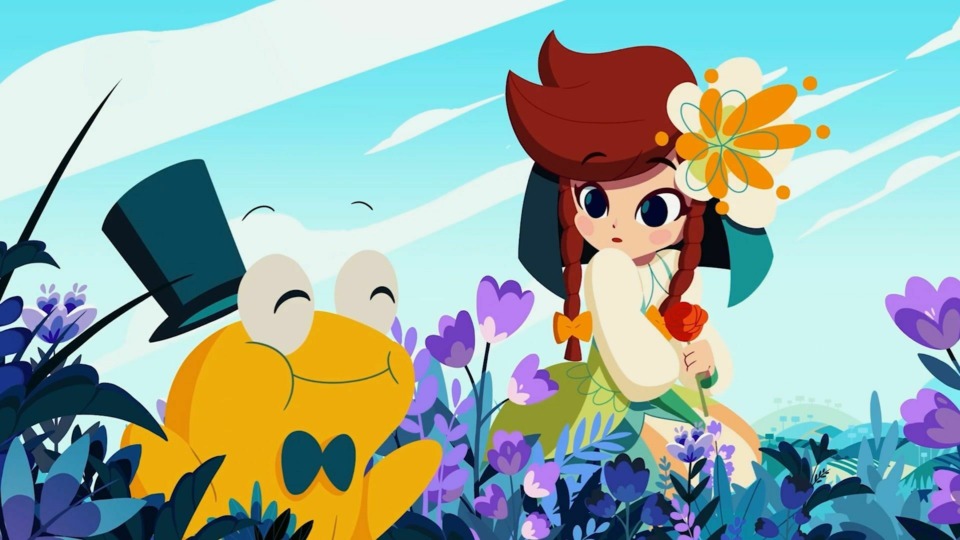
If anyone saw footage of Cris Tales before release, they were arrested by its striking, colorful art style and exciting time travel mechanics. The game promised the opportunity to explore its world’s past, present, and future all on the same screen. With listed influences including the best role-playing games in history, Cris Tales quickly earned my attention. I hoped for a light adventure to enjoy during the summer days. Sadly, the scope of the game is beyond the grasp of its small team of developers. While the work on display is evident on each screen, there are problems in almost every area of the game, and no one component is great enough to rise above. Ultimately, Cris Tales does not meet its potential, making it difficult to recommend to the average player.
Crisbell, our protagonist, is an almost-too-sweet girl living in an orphanage. When she follows a little yellow frog to an altar and awakens latent time mage powers, her destiny is set in motion. Now, Crisbell can see into the past and future. She witnesses disasters that are yet to fall and can act to stop them. But of course, every adventure needs a villain – here, it’s the Time Empress, who is waging war across the world’s kingdoms and won’t stop until everything is destroyed. With the help of Matias (the frog) and some more motley party members, Crisbell sets off to – what else? – save the world.
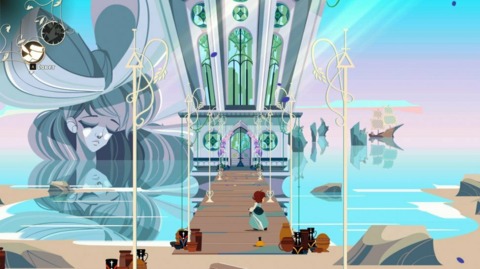
If there’s one place that Cris Tales totally succeeds, it’s art. Even screenshots of the game capture attention, and it looks just as good in motion. The entire game is rendered in vivid color. At least once, I had to take a knee and soak in the gorgeous environments. Backgrounds draw much from Disney’s Sleeping Beauty, noticeable in the color palette and the tall, skinny trees. Character designs come from a different source. The style may originate in cartoons I haven’t watched, but it reminds me of a type of artist you see on Twitter – the kind that exclusively draws cute girls. That’s what we get here. Every character has big puppy-dog eyes and rosy cheeks. On one hand, this choice pulls the fairy tale atmosphere together and gives a sense of cohesion. On the other, when even the most despicable villain would make for a cute plush, there’s room for more diverse character design. Cris Tales’s artists should be proud of what they accomplished; their work, however, is not enough to overcome the game’s more nagging problems.
Time travel was what hooked me into playing Cris Tales, and despite some fun ideas, its implementation doesn’t meet expectation. In town areas, the screen is cut into three triangles. Crisbell runs around the present, in the middle section, while the left and right sides show the past and future, respectively. At once, the game displays the area in its prime, its current state, and the depressing future that awaits if the crew doesn’t intervene. You can run by every NPC and see how they hold up between the eras. An adult in the present will be a child in the past and elderly in the future. It doesn’t sound like a revolutionary concept, but it’s no less cool to see what everyone looks like through the years. It meant the developers had to draw three versions of almost every character, which couldn’t have been easy on the workflow.
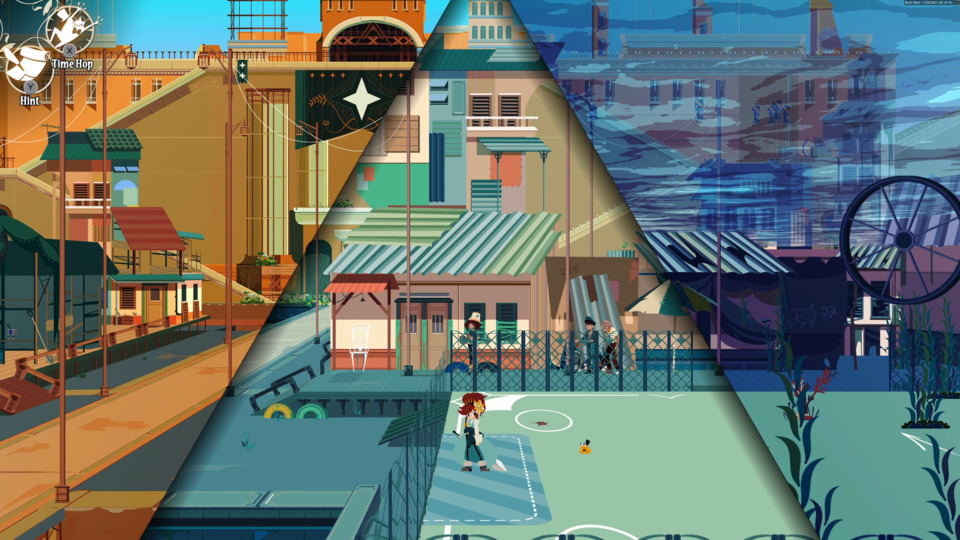
Once the initial excitement has worn off, though, your interaction with the timeline in these sections is limited. Crisbell can’t go into the past or future herself, but Matias can. This gives us the incredible visuals of him as a tiny tadpole and a fat old frog. However, there’s just not a lot for him to do. It’s mostly pilfering items from treasure chests and bringing them back to the present, butterfly effect be damned. Quite often throughout the story, there will be a plot-critical item needed from a different time, but these never lead to an interesting obstacle. The following exchange will always happen: “We need this item. But oh no, it’s destroyed… Wait a minute! We can time travel to get it!” This quickly gets stale, and the game generally lacks exciting challenges to be solved with time travel.
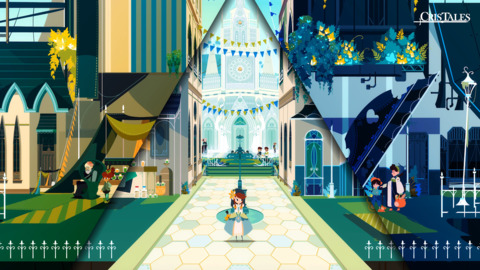
Occasionally, you can get clues by listening in on conversations in other time periods, but this is always a scripted story beat. Outside of those cases, you can’t interact with anyone’s past or future selves. That means you’re left with statues who are tragically destined to stand in the same spot for their entire lives. Time travel in towns isn’t nearly as dynamic as I hoped, but it’s the still the most robust application of the concept in the game.
That’s because it takes even more of a back seat in battle. Enemies will attack from the left and right sides, and by using time crystals, Crisbell can send them to the past and future. Yes, nearly every enemy has three versions of itself, all with varying stats and abilities. But in my whole playthrough, sending enemies through time was almost never worth doing. First, the stat differences are minor enough that they scarcely matter. Your party will probably take down an adult wolf in about the same time as a wolf cub. But say that for whatever reason, you’re determined to kill that wolf cub. It needs to be on the left side of the battle so it will be sent to the past, not the future. One party member can move enemies to the opposite side, but between him and Crisbell, that’s now two turns you’ve spent for that setup when both characters could just kill the bigger wolf together. This scenario plays out in every single battle, and in cases where the game does ask for a specific strategy, it never involves this mechanic. The only exception is… the tutorial.
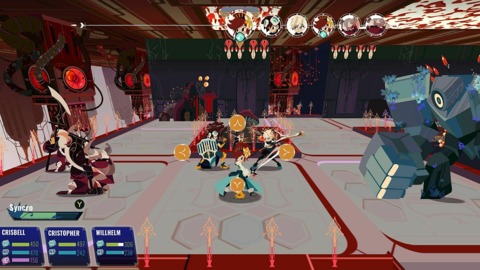
Three party members can be active at a time, including Crisbell. They include Cristopher, who can do alright damage in the early game and has magic to target enemy weaknesses. Wilhelm, another time mage, has variations on all his spells that can either affect one target immediately or an AOE a few turns down the line. These add more tools to play with the time crystals, but again, the short-term play is always the better option. JKR, a robot (because why not), can perform a litany of attacks, but in doing so fills up a heat gauge that can cause the party damage. Zas, a goofy airhead, has for some reason the unequivocally best damage output in the game. When she gets added to the party, don’t take her out. Newer characters generally outclass the old, so poor Cristopher spent the entire back half of the game bench warming.
Difficulty fluctuated often in my playthrough. In the first hours, I was often scraping by because options were so limited. After a while, though, the game was giving me a good amount of challenge. One midgame boss was a potent difficulty spike. After a small amount of grinding, I defeated the boss, and following battles were pathetic. However, the final bosses were such an intense step up that I hit my head against them for some time. The key to victory in these cases was more about using one specific move than anything else.
Time spent between battles isn’t much more engaging. While every area looks beautiful – even the sewer dungeon to a limited extent – the experience of exploring is flat, literally. Level geometry consists of connected rectangles, with elevation coming only from 45-degree ramps that lead to more rectangles. Split paths have the traditional treasure chest with an unnecessary item at the end. The lack of variety probably comes from the amount of pretty art covering the basic shapes. Nevertheless, environments can be tedious to explore. In later dungeons, there are some basic puzzles to add complexity. This is appreciated, but it is also the point where the game’s random encounters become most infuriating.
For all the problems I have with RPGs as a genre, I’m surprisingly not put off that much by random encounters. True, none of my favorite RPGs have the mechanic, and I think it’s always a worse way to go. In this case, they committed to that choice, which is fine on paper. But it really highlights the problems in the way I played the game. I bought Cris Tales on the Nintendo Switch for one simple reason: I wanted to play it on vacation. It certainly served that purpose, but on the whole, I think it was the wrong choice. The Switch port is trapped between exceptionally long loading times for every screen and every battle. This is tolerable in towns, if annoying, but in the field, it only amplifies the inherent frustration of random encounters. Imagine playing Final Fantasy, but instead of a flashy screen transition before battles, it faded to white, held there for 20 to 30 seconds, all while playing the same music, before moving to an unimpressive battle scene. From what I understand, RPGs of the past could have long loads, but presentation is everything. In Cris Tales, it feels even more like a red light in the way and makes me wish I had just played on a different, faster platform.
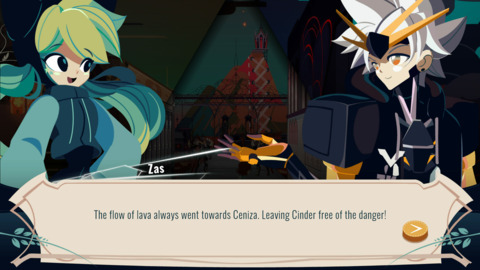
The tone and story of the game similarly stick perhaps too close to RPGs of old. In other words, the plot goes through a parade of tropes and storylines you have no doubt seen many before. The way arcs unfolded did nothing for me, but as I often say, a good party dynamic can make up for a weak narrative. Sadly, this is not the case here. Wilhelm and Cristopher have one of those fake rivalries where one thinks the other is an idiot and they get snippy with each other. But this antagonism doesn’t have anything to anchor it – the party never disagrees about their goals, so they’re insulting each other just to do it. JKR is not only a robot, but has missing memories, which is about the billionth time I have encountered that particular character. Zas brings levity – while her dialogue is not as funny as they think, it at least spices things up. Strangely, she joins the party just when the game pivots to more serious subject matter, which makes her comedy an unnatural fit much of the time.
When the game starts, the tone feels soft in a way that is typical of RPG beginnings. So, while I was seeing familiar beats, it at least meshed well with the presentation at that time. But as the game goes on and things get darker, it comes apart. Zas joins only after there’s been discussion of public execution, followed by references to genocide and Killing the Younglings by game’s end. The writers suddenly decide to get more serious, but every character is still an adorable cartoon. Without any attempt to rectify this contrast, the tone is unearned.
Clearly, I am in the mood to complain, but most of this is forgivable. For a small team to deliver a complete RPG experience is no easy task, especially since Cris Tales is fully voice-acted in English. But there is still a distracting lack of polish. Attacks are often missing sound effects that would help sell their impact. The script has an alarming number of typos. I once had textures not load, so I ran across a featureless white void. The in-game clock continues ticking while the console is in sleep mode, and the game crashed after one of the penultimate boss fights. Had there not been a save point in between, the rage would have flown.
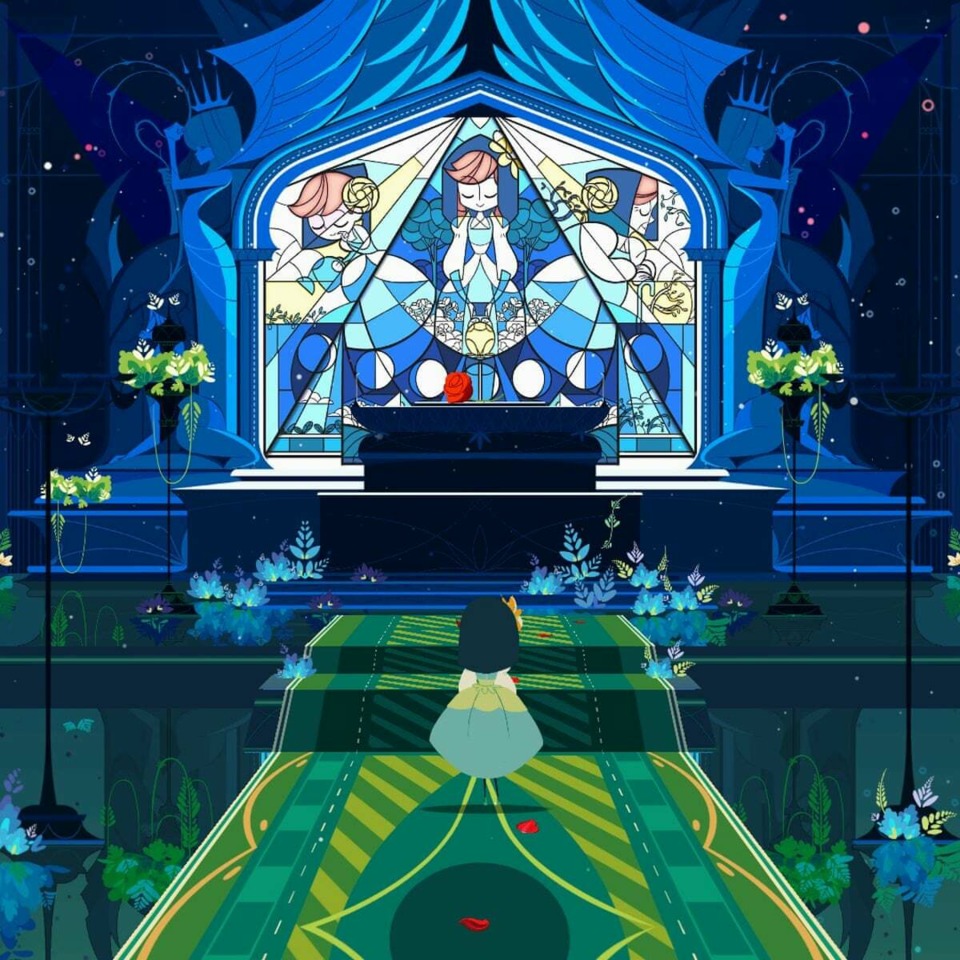
However, Cris Tales’s absolute biggest failure is the way it handles its ending. As a time mage, Crisbell wields the power to make choices that dictate the future of each kingdom. Each big choice comes at the end of each chapter, and they are not even a little compelling. This is because by doing every side quest, you gain a third option, which is just “why not both?”. Firstly, this undermines any dilemma the decision may have carried. Second, I have a major aggravation with the side quest requirement. Before each chapter boss, there is a point of no return that tells you to finish up the quests if you want the best option. Sounds fine, except that is a lie. By the time the first of these warnings came up, it was already too late for me to finish the quests. Important characters had disappeared due to story reasons. I was locked out of the best choice for the region, and the game’s best ending, just a few hours in. To be sure, this did not distress me that much – as I said, my investment in the story is limited. But to miscommunicate such a critical juncture to the player is a major error that should have been addressed. When my ending was incomplete and unsatisfying, I knew it was the game’s fault, not mine.
But to even get to that ending, there was more frustration to endure. Obviously, what appears to be the final boss is not the final boss. I was fully expecting this, and the boss rush to follow. What I didn’t expect was the game to force me to backtrack to all its previous areas not once, not twice, but three times in a row before I could fight the true final boss. Again, grand revisit tours are not uncommon in JRPGs, but this is such blatant padding it becomes offensive. Had it not been for the late-game item that turns off random encounters, my Switch might have gone out the window. All the while, you are getting backstory heaped onto you, the worst kind that a story can give, the kind that introduces completely new storylines and characters and hastily develops them in the final hours. I buttoned through all of this exposition because, at this point, I just could not care. The pool of my goodwill had run dry.
Like I said way at the top, this is a case where the developers’ ambition outpaced their budget. Cris Tales has many problems, and they drag down everything that was promising about the title. I can’t recommend it without heavy reservations. The team’s second or third game, however, will be worth paying attention to. I believe that with better focus and planning, something special could come from these developers. But for now, you are better served revisiting the classics that inspired them.
